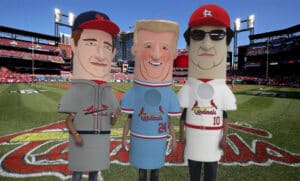
Training to Become a Racing Mascot
Have you been given the chance to race as a racing mascot? This blog will tell you everything you need to know to get that 1st place trophy. Let the training begin!
If you’re like most people, you’ve probably never bought a custom mascot costume before. It certainly isn’t an everyday purchase, but it’s one that will strengthen your brand and serve as a powerful marking tool for years to come. That said, buying a custom mascot costume requires time, money, and thoughtful planning, so it’s important to make the right decisions. With so many key components to consider, the process can be unfamiliar, maybe confusing and a little overwhelming.
Here at Olympus though, we’ve been helping clients bring their mascots to life for years, so we know a thing or two. To make things easier, we’ve put together the 10 most important factors to keep in mind when buying a mascot. These tips will help you design the perfect character with the ideal look, fit, performance, and durability.
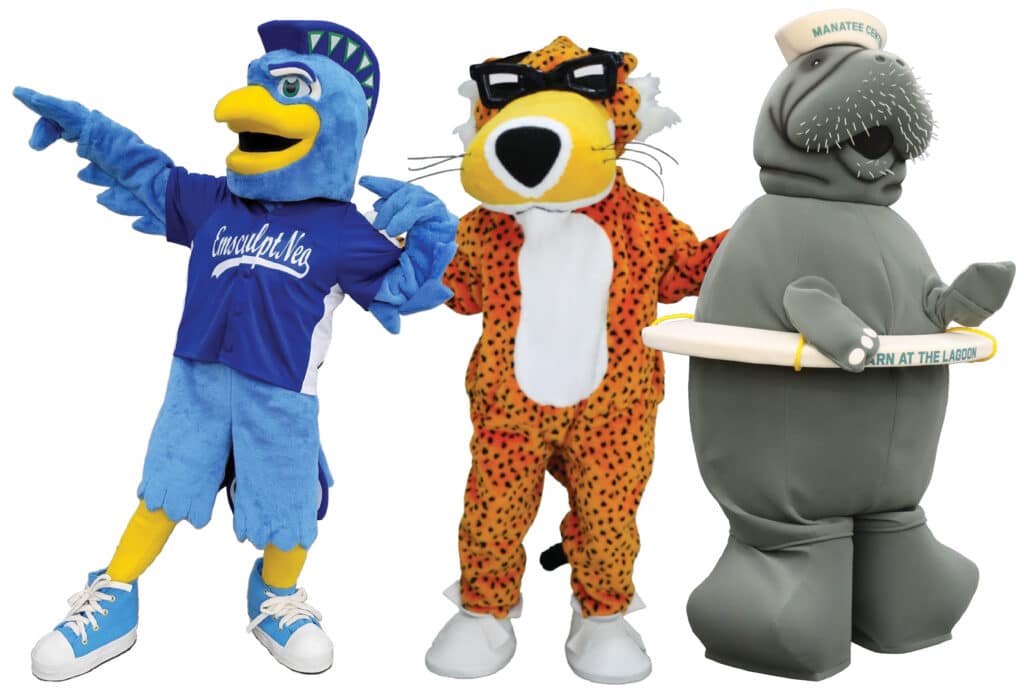
The main purpose of a mascot is simple: to bring your brand to life… literally! When creating your mascot, it’s important to follow your brand guidelines. Make sure to utilize the colors, font, slogan, logo or anything else that is important to your organization for your mascot design. If your organization already has a character that is used in a logo or a story, use that as inspiration for your mascot design. This helps keep consistency within your brand. If you are starting from square one and don’t have any inspiration then check out this blog! (Mascot Ideas).
Next is to consider the places your mascot will be at. Is your mascot cheering on student basketball games? Then consider adding a custom basketball jersey with your school colors to your mascot. Is your mascot going to help launch your grand opening? Add a logo to the mascot to reinforce your brand image into your customers’ heads. A mascot’s main job is to boost brand recognition and help you stand out from the crowd. By adding small, thoughtful details, you can make your mascot even more memorable and your brand more impactful.
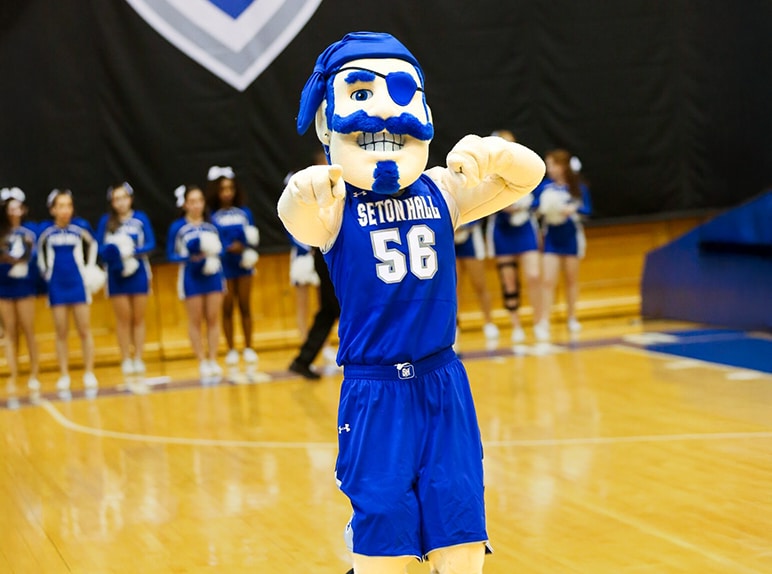
Sizing is a very important element to consider because it can drastically affect the places your mascot can go to, the way your mascot moves, and how you transport your mascot. To help think about sizing in a visual way, consider if you want foam or standard mascot. Foam mascots are typically bigger in size to create an exact shape or object. Standard mascots, on the other hand, usually consist of a mascot head and a jumpsuit which are commonly used for animal or human characters.
If you go the foam route, think about how and where you want your mascot to perform. If your mascot will be at a lot of indoor venues, you want to ensure it can fit through an average sized door frame which is about 36 inches wide. Also keep in mind due to the size of foam, the range of motion can be limited. On the other hand, though, foam mascots are perfect for photo ops and meet-and-greets.
Transportation is another key component to think about. If your mascot plans to travel a lot then you’ll want to consider getting a smaller mascot. Most foam mascots are shipped via freight to ensure damage doesn’t occur, meaning it won’t easily fit in the back of a car or bus.
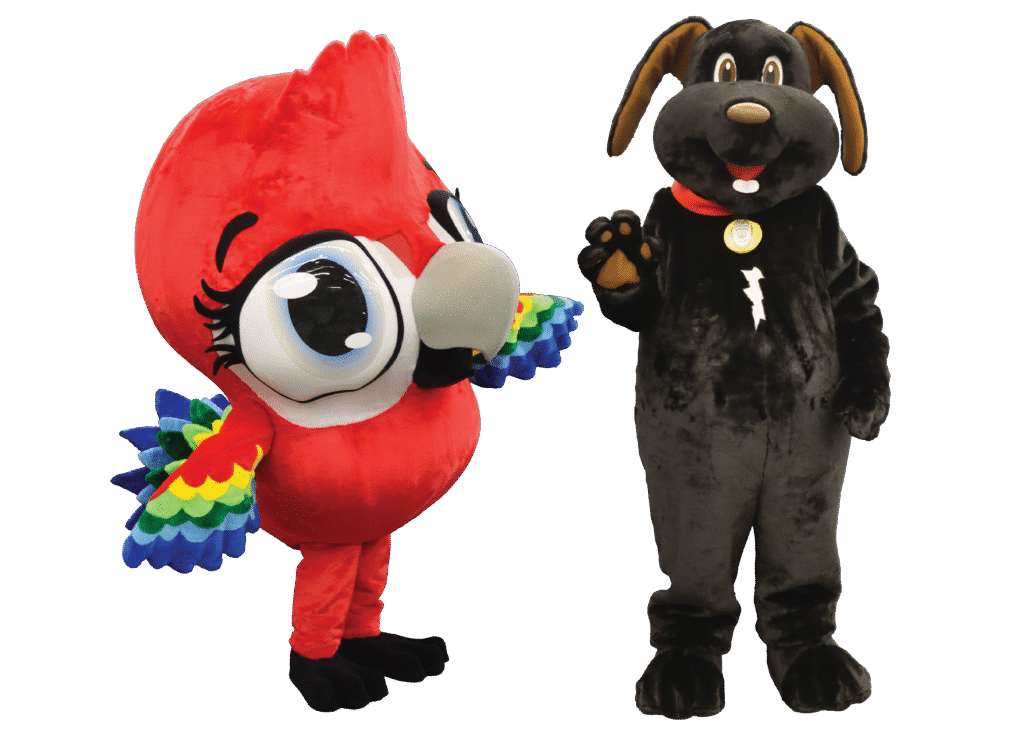
Fitting your mascot costume on your performer is something you should also consider when buying a mascot costume. The mascot costume should fit the body profile of the performer. Some organizations only have one performer, while others have multiple. If you have a performer who is five feet and another who is six feet tall, the costume will not fit the same and your mascot will end up looking different based on the performer wearing the costume. This situation is not ideal, so it is important to get performers similar in body size to ensure that your mascot will have a consistent look.
A spotter is also just as important as the mascot performer. Spotters escort the mascot where it needs to go, help with crowd control, and make sure the performer is always safe and ready to perform. Having a spotter can help your mascot get dressed, prevent your mascot from falling, and act as the mascot’s voice. If your performer does not have a spotter, the costume design needs to be easy to put on, and the visibility needs to be clear.
Different mascot companies will offer different head options. The most common head options are plastic heads and foam heads. Make sure you understand the advantages and disadvantages of each mascot head when in the mascot design process. Plastic heads, while heavier than foam heads, are ideal for ventilation, longevity, and durability. The heads can be cleaned easily after each use and don’t absorb sweat and odor. Foam mascot heads, while lighter, easily absorbs moisture and sweat and can get smelly. In addition, foam disintegrates over time, so your foam head will not last as long as a plastic head will. Multiple types of foam heads exist, so make sure you do your research to understand which option is best for you and your performer. If you aren’t sure what option would be best for your needs, check out our mascot heads blog, or make sure to ask your designer about all the possibilities.
You don’t want your mascot to be falling over during a performance. Besides the general bulk of a mascot costume, feet size can play a big role in the steadiness of the costume and performer. If you plan to have an active mascot that will be running around all the time or using stairs frequently, you should go with a smaller shoe design. There are a few different options available for mascot feet:
For more information on mascot feet functionality and design, check out this blog!
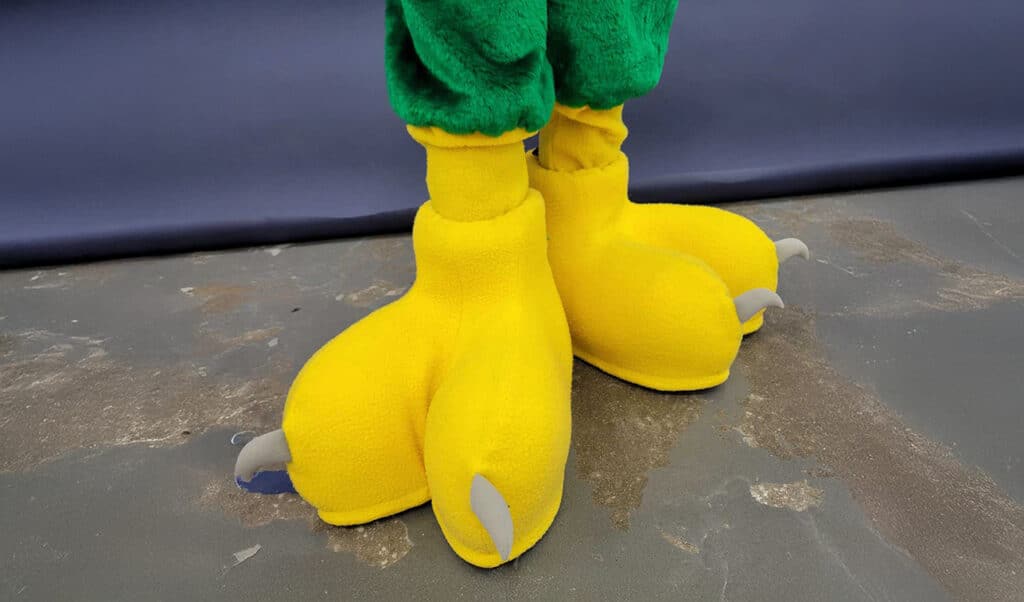
Determining the purpose of your mascot will help you to decide on the style of hands you’d like for your mascot. If you are going for a cartoonish look, consider using four-finger gloves; however, it will be more difficult to hold objects. If your mascot will need to hold smaller objects or if the mascot will be using their hands quite a bit, a five-finger glove would be a better option. Additionally, any mascot hands can be designed with alternate material to give the mascot performer a better grip.
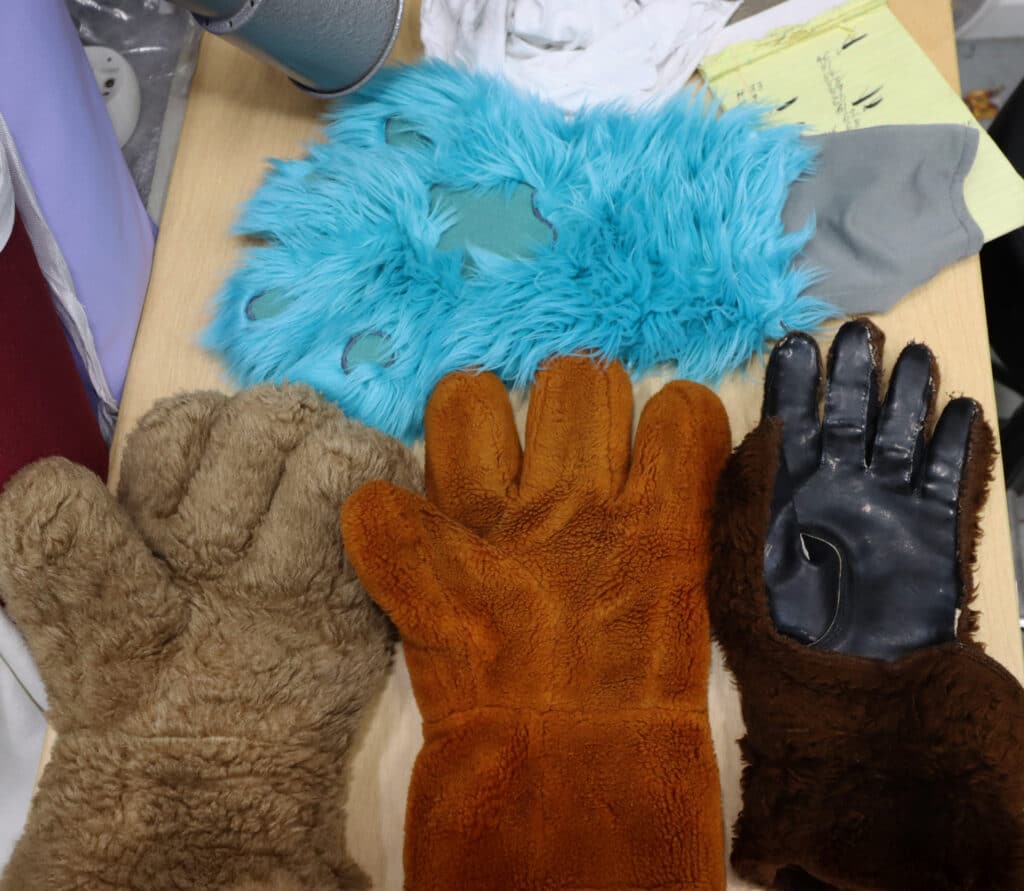
Visibility is an important aspect of a mascot costume: to perform at its best, a performer needs to be able to see through the costume. A more active mascot will need better visibility and line of sight than a less active mascot. Depending on the custom mascot company that you buy a mascot from, there may be a helmet installed on brackets, so the performer can adjust the helmet for optimal vision through the professional mascot costume. Either way, it’s important to consider the best place for your mascot character’s line of sight. Popular places to add vision to your costume is:
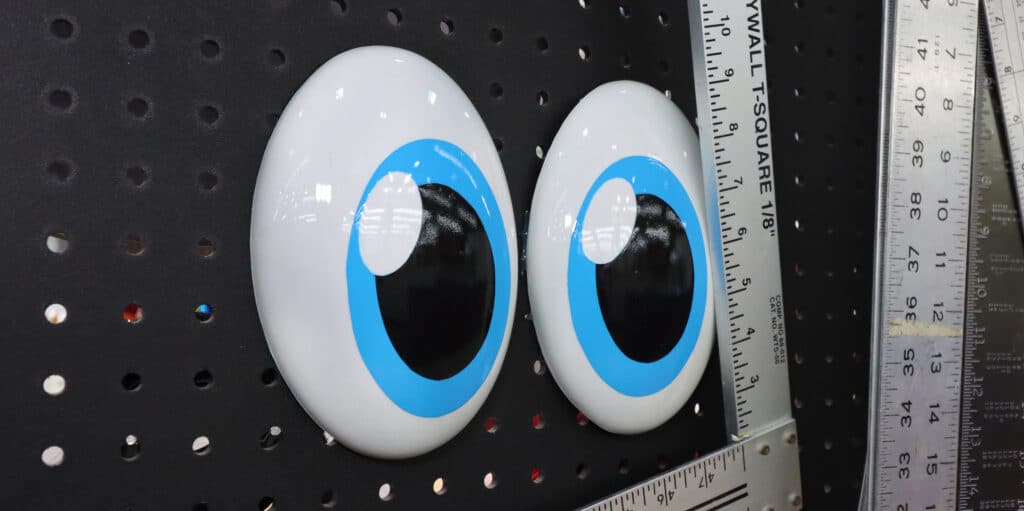
No matter the climate your mascot will be working in, the costume will be hot to wear. To get some extra air movement in the costume, you should consider adding ventilation. Small areas for ventilation can be hidden by the fur on the costume, and in some cases, fans could also be installed in plastic heads. Cooling accessories, such as cold collars and cooling vests are available to prevent your mascot performer from overheating. On hot days, these accessories can make a huge difference for your mascot performer. Professional mascot costume companies have cooling accessories available for purchase separately or at an additional cost when you buy a mascot.
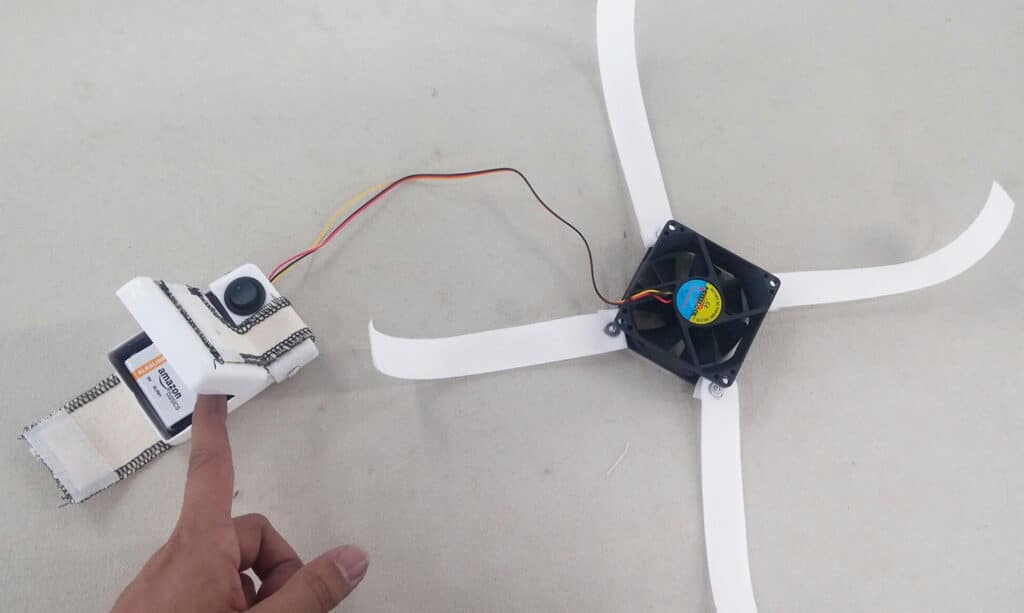
When your brand mascot is not used, you will need to store it properly. If you don’t protect the head and other fragile parts of the costume, it can easily get damaged and will get dirty. Make sure you have a temperature regulated space to store your mascot costume. If you can, it is best to hang up your costume and place the head in an area where the shape won’t get damaged. Some organizations use their mascot at events nationwide. If this is the case for you and your organization, you need to consider how it will get to those locations. Shipping a professional mascot costume can get very expensive, and you need to make sure you have a travel crate that fits the whole costume.
Each of the aspects listed in this article affects the price of your custom mascot costume. The more detail, special materials, or accessories you add will increase the cost of your mascot. If you’re able to communicate the price range you are working with to your professional mascot costume company from the beginning, they will be able to make recommendations that will help you stay within your set budget.
All the factors in this blog can impact the mascot performer and fan experience. A good custom mascot company will be able to help answer all your questions and walk you through each step of making a mascot, asking questions and listening to your needs throughout the process.
Ready to buy your own custom mascot? We can help! Please click here or fill out the form below to speak with one of our mascot experts!

Training to Become a Racing Mascot
Have you been given the chance to race as a racing mascot? This blog will tell you everything you need to know to get that 1st place trophy. Let the training begin!

Need a fresh version of your beloved mascot? Olympus Mascots specializes in mascot replication, ensuring a perfect match in materials, colors, and details. Keep your mascot’s legacy alive—learn more today!

Mascot Feet: Putting Your Best Foot Forward
From bird feet to sneakers, there are many different kinds of mascot feet. Mascot branding is super important for a mascot’s identity and mascot feet can help to complete that character.